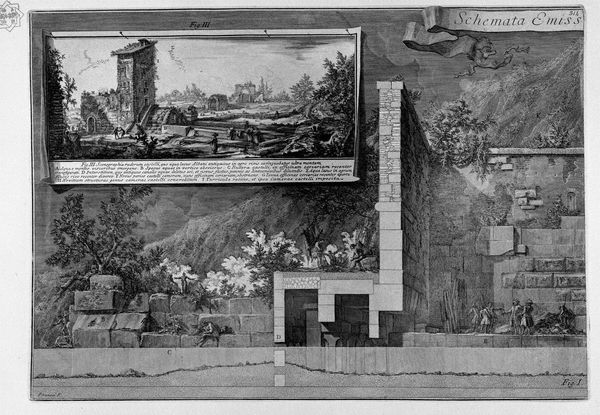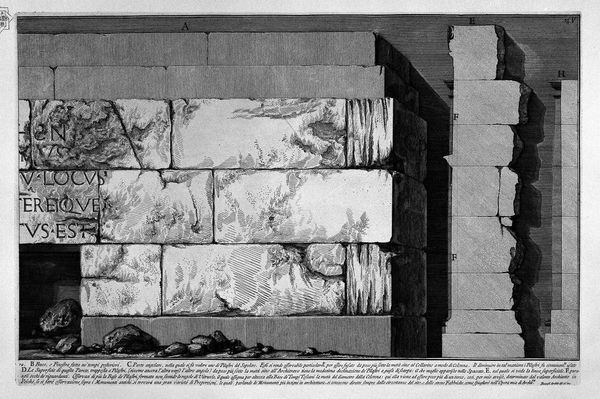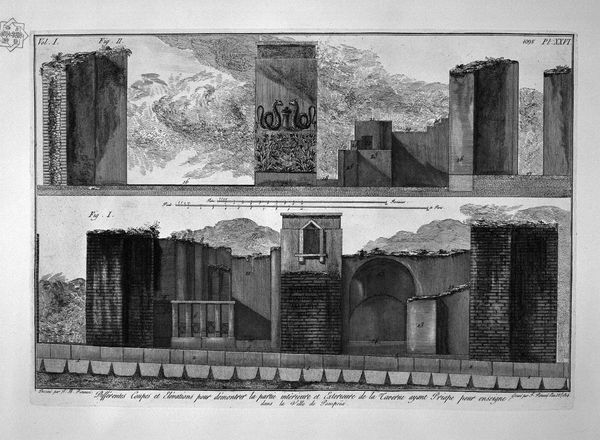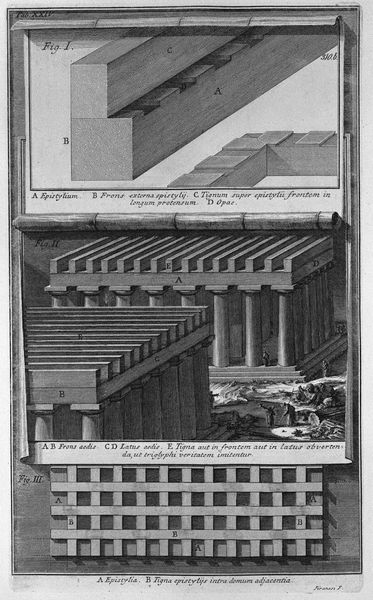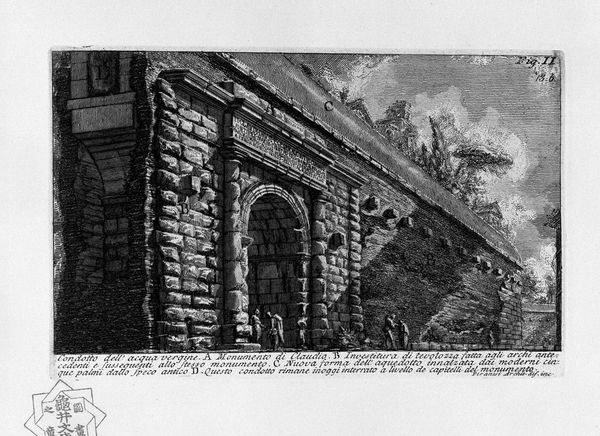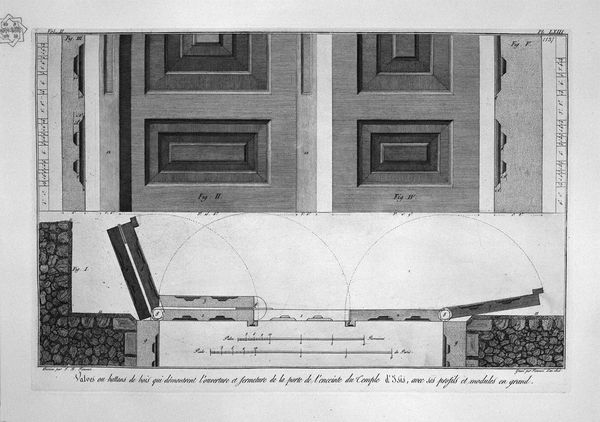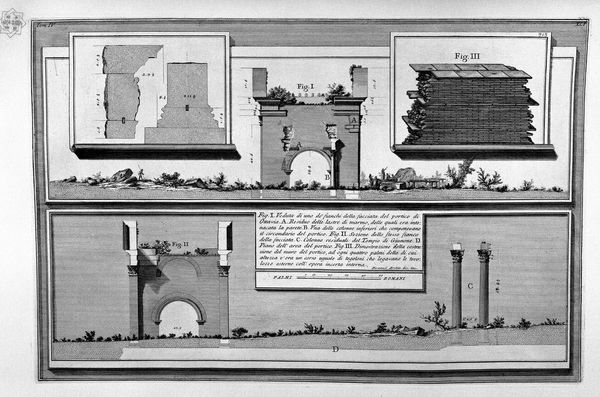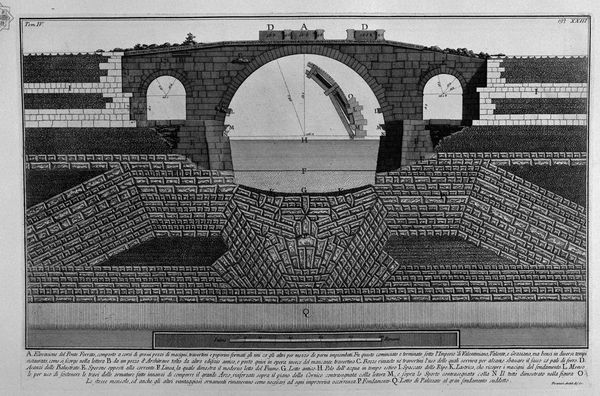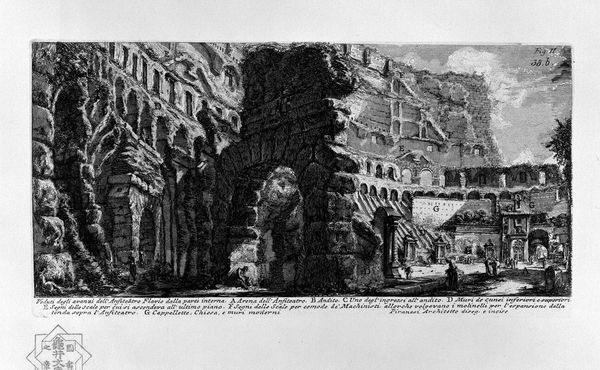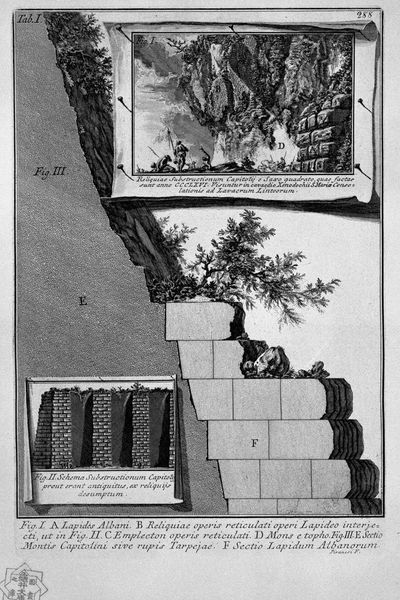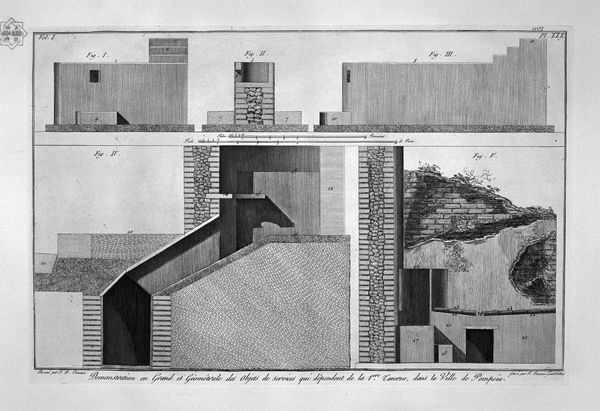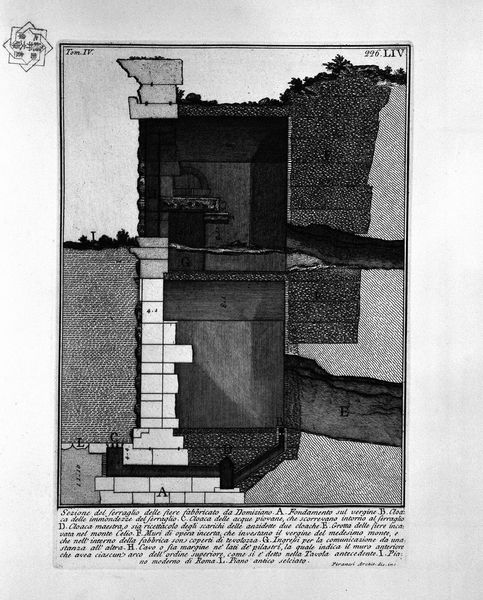
drawing, print, etching, engraving, architecture
#
drawing
# print
#
etching
#
sculpture
#
carved into stone
#
geometric
#
ancient-mediterranean
#
column
#
black and white
#
line
#
engraving
#
architecture
Copyright: Public domain
Curator: Here we have a print entitled "Following the above table" by Giovanni Battista Piranesi. The composition utilizes engraving and etching. I find the meticulous detail captivating. What strikes you first? Editor: It has such a compelling, melancholic beauty. The strong linear quality feels almost architectural itself, doesn't it? Even without people populating the space, there's a definite sense of human presence, a ghost of industry almost. Curator: Absolutely. Piranesi's architectural prints are famous for this sense of a looming, powerful history, often intertwined with themes of decay and the passage of time. They resonate deeply because they make us contemplate the relationship between grand human endeavors and eventual ruin. Editor: That reminds me of the persistent human need to leave some mark. Notice the heavy, block-like forms. Their stark, geometrical weight lends a monumental, almost tomb-like feeling, hinting at eternity and legacy. The crumbling away only accentuates this yearning for permanence, I believe. Curator: It’s worth noting Piranesi's historical context, too. During the 18th century, there was widespread fascination with antiquity, a rising of archaeologomania that influenced many artists. Piranesi participated in and certainly further fueled the aesthetic of the ancient world through prints like this one, making them accessible to a wide audience. Editor: That interest certainly reveals itself here in the symbolic depiction. Even the visual style – the detailed lines and contrast – it evokes classical engravings on sarcophagi, connecting the work with cultural ideas surrounding antiquity, death, memory, even stories and myths of what might come after this earthly plane. It almost transforms the location, a drawing for an underground chamber connected to Lacus Albani or Lake Albano near Rome, into the realm of Hades. Curator: That intersection of precision and romanticism is, I think, a significant aspect of Piranesi’s appeal and why the images were popular amongst a wealthy, educated elite across Europe and in the Americas. What would you want listeners to remember most when viewing this print? Editor: Perhaps that objects and locations hold embedded emotions and stories of longing. Things thought static are, through art like this, shown as repositories of human emotion. Curator: A perfect reflection on art's purpose, wouldn't you agree? To reveal hidden stories within the architecture around us, rendered permanent in prints and the memory.
Comments
No comments
Be the first to comment and join the conversation on the ultimate creative platform.
